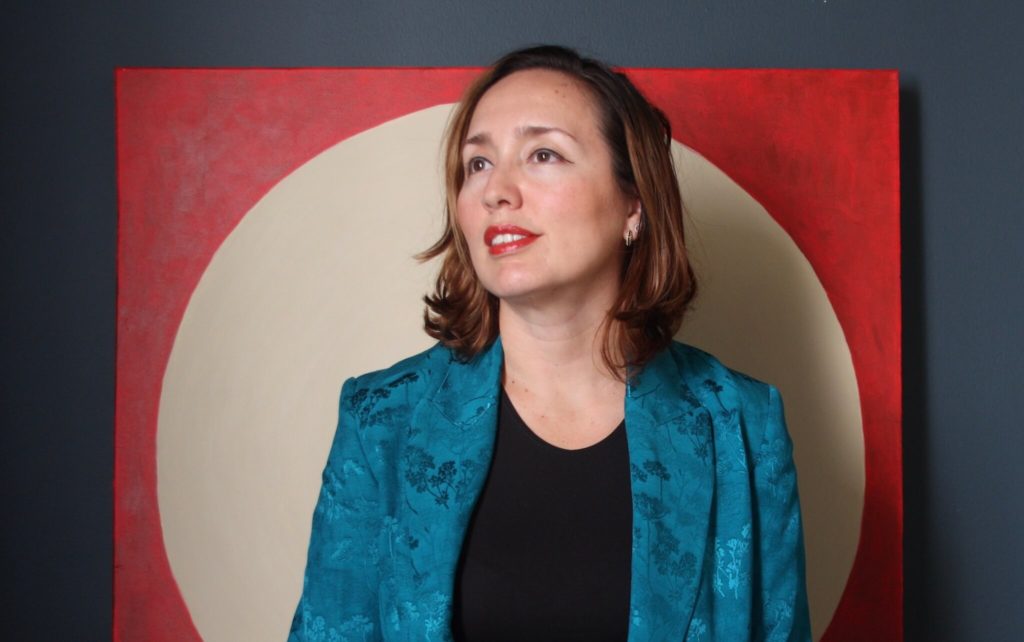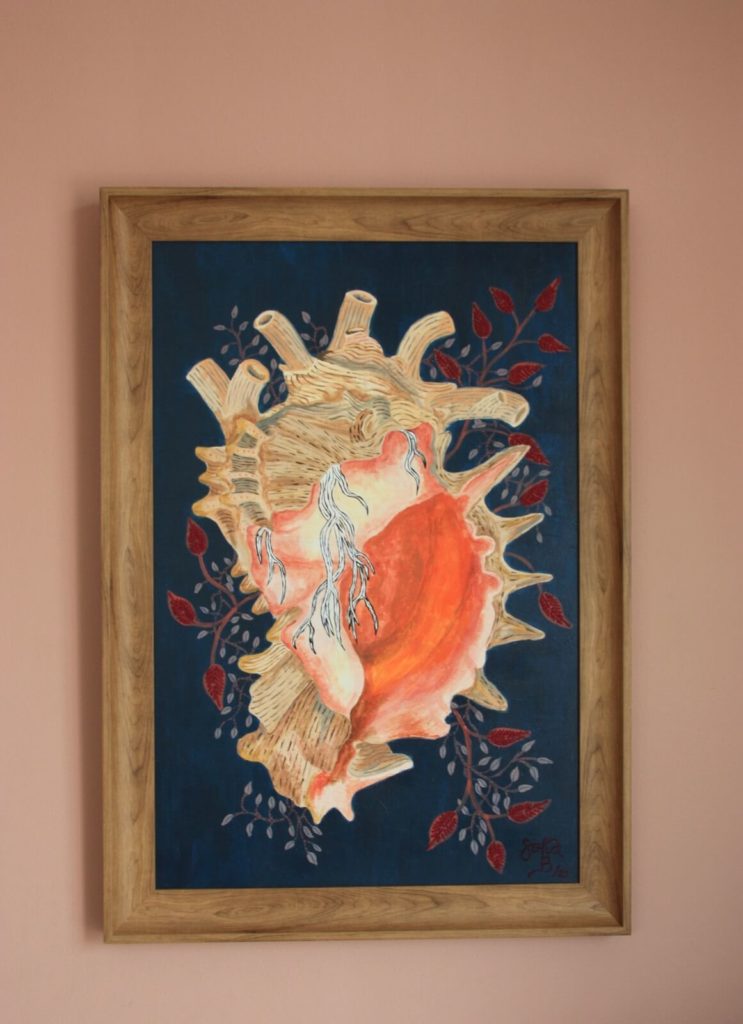
Sofia Basto Riousse, b. 1981, Pitalito, Colombia.
Lives and works in Dubai, UAE.
Colombian-French self-taught artist, based in Dubai since 2015. Her art path started back in Colombia with big-format mural paintings. Once a lawyer fed up with codes and paperwork, Sofia returned to the arts, where she contemplates nature and observes social dynamics. Having decided to move her brushes again, watercolors and acrylics are her main mediums. Embroidery and decoupage can be found in her collages and paintings, always accompanied by a botanical touch, which reminds her of the mountains and jungle she grew up surrounded by.

Translation: En evocation of the environment of origin as seen from the Middle East, a longing, a manifestation of tropical nostalgia, Detail
“When talking about ‘almacén’, the first image that comes to mind is a huge store where nothing is missing, like a place where I feel small and want to buy everything. ‘Almacenar’ is to store, but that is the first of several actions implicit in this act. In my opinion, there is an exercise of appreciation: who wants to store something they don’t like? Above all, ‘almacenar’ is to save something in an express manner, in an organized way, to preselect. It involves remembering where you have placed what you stored. Remembering why and at what time what you stored can be used. And then the question is: store for what? To admire? To seize? To display?”

Translation: En evocation of the environment of origin as seen from the Middle East, a longing, a manifestation of tropical nostalgia.
“I come from a region in the south of Colombia with little Arab influence, so this whole cultural universe was completely new to me. The first contact was in France where I perceived the Maghrebi influence in several aspects: food and literature, for example. In Singapore, I discovered the spiritual dimension, given the proximity to Malaysia and Indonesia, countries that have the largest Muslim population. Dubai has represented for me a more intimate experience with the Arab world, a continuous auditory exposure to the language, discovering some connections with my mother tongue, Spanish. Also the experience of being a spectator of what Ramadan represents within an Arab family. It has involved understanding an aesthetic, a color palette, and an ever-present geometry. A way of living in relation to the environment, picnics in the desert, serving tea on a rug on the beach at sunset. A lifestyle that always seeks comfort (and achieves it!) in an environment that could be seen from the outside as unfavorable to it.”

exteriores haciéndolos nuestros.
Translation: Along the same line of tropical nostalgia, here are the plants of my grandma, in return to a yesteryear place, where the jungle is the welcome home, where we coexist with exterior elements making them ours.
“I envisioned the [Arab] cultural movement completely framed within a religious framework. I didn’t imagine the openness that actually characterizes it. I have found a quite encouraging dynamism, different spaces of creation, of interaction, a desire to connect between the people who create, between those who write, an entire ecosystem that wants to grow more and more through connectivity.”

Translation: What does our within resemble?
“Since moving to the Emirates I have returned to embroidery. I always received my education in a Catholic school, where embroidery and weaving were part of the comprehensive education that a “good young lady” should receive. In daily life, its usefulness had not been manifested to me to a greater degree. However, here this knowledge returned from my memories, to highlight the local clothing decorations, to admire them. This reunion made me introduce embroidery to my canvases and I am currently researching the local Talli embroidery. It’s inevitable to escape to calligraphy, which plays a leading role in the arts of this region -not speaking Arabic is not an impediment to appreciating its fluidity.”

“Bearing in mind that nature has always been a main driver in my creative process, the Emirati landscape has been a complete surprise. The fauna and flora, yes, the flora, are an invitation to detail, as opposed to the tropical exuberance that, whether you like it or not, enters your eyes. Here you have to delve into the details, look for the tree, the camouflaged fauna, settle for fewer species, but savor them with your eyes down to their last details. When you get here you think there is no ‘nature’. Your notion of it changes, because there is, it’s just that it’s different and it doesn’t fall short in beauty.”